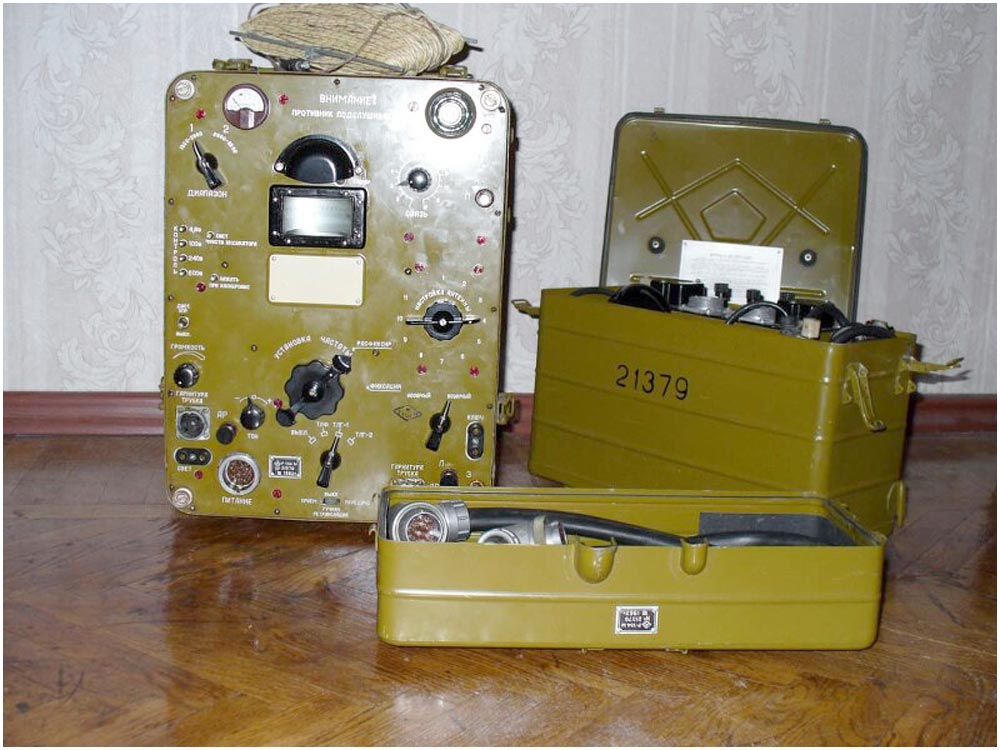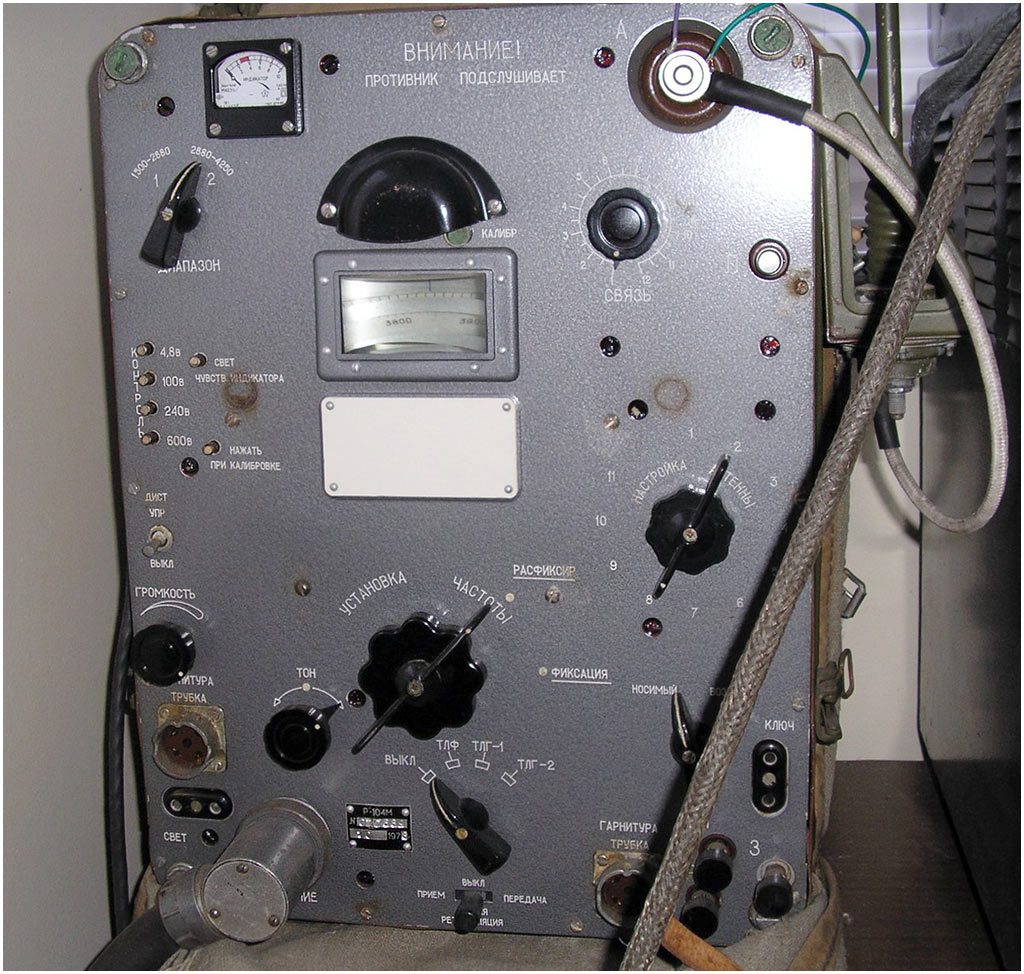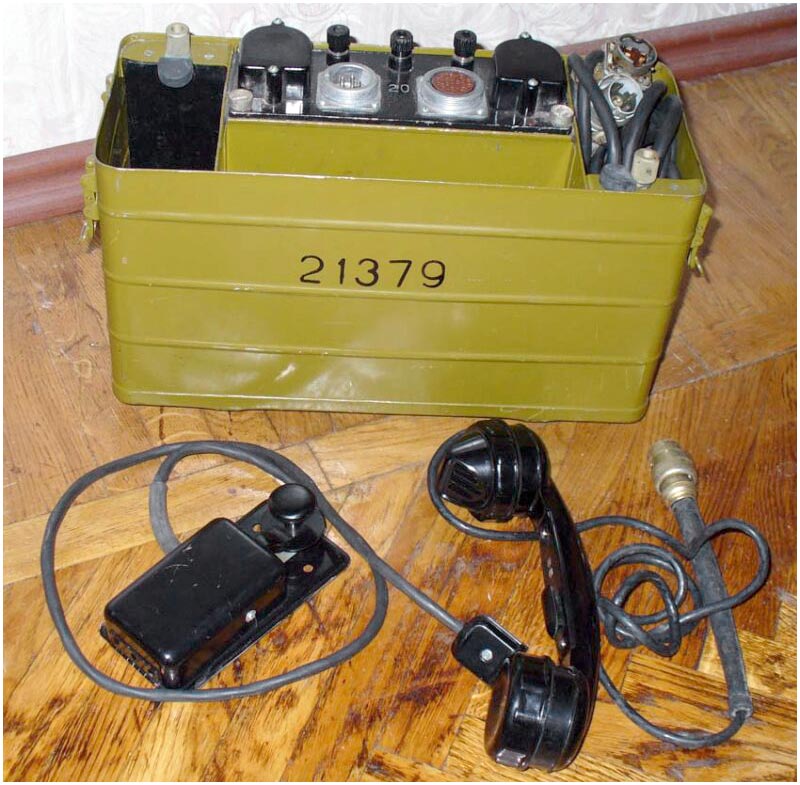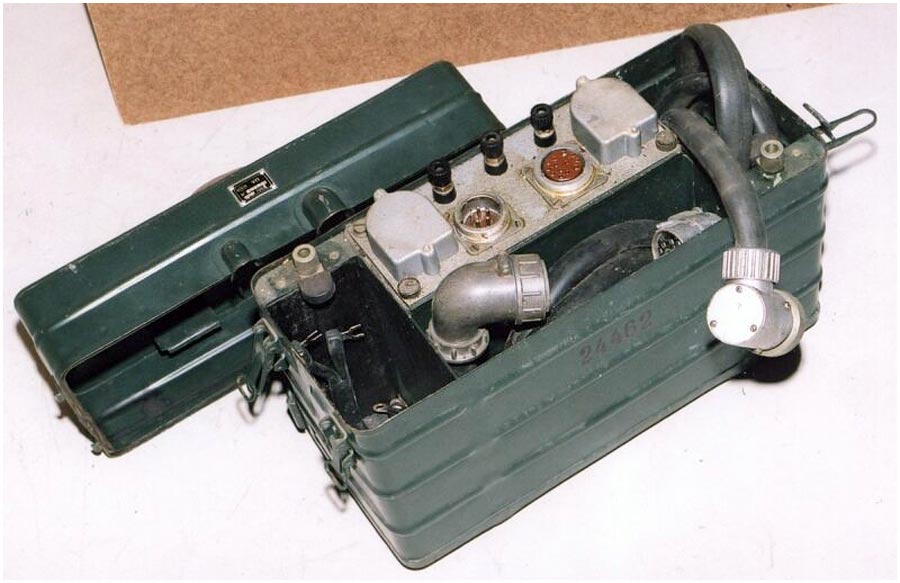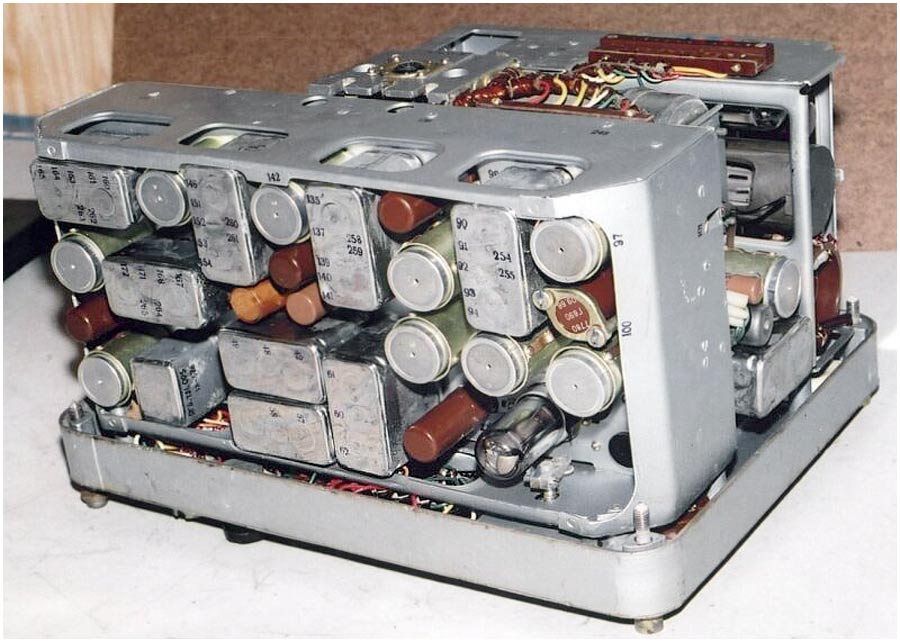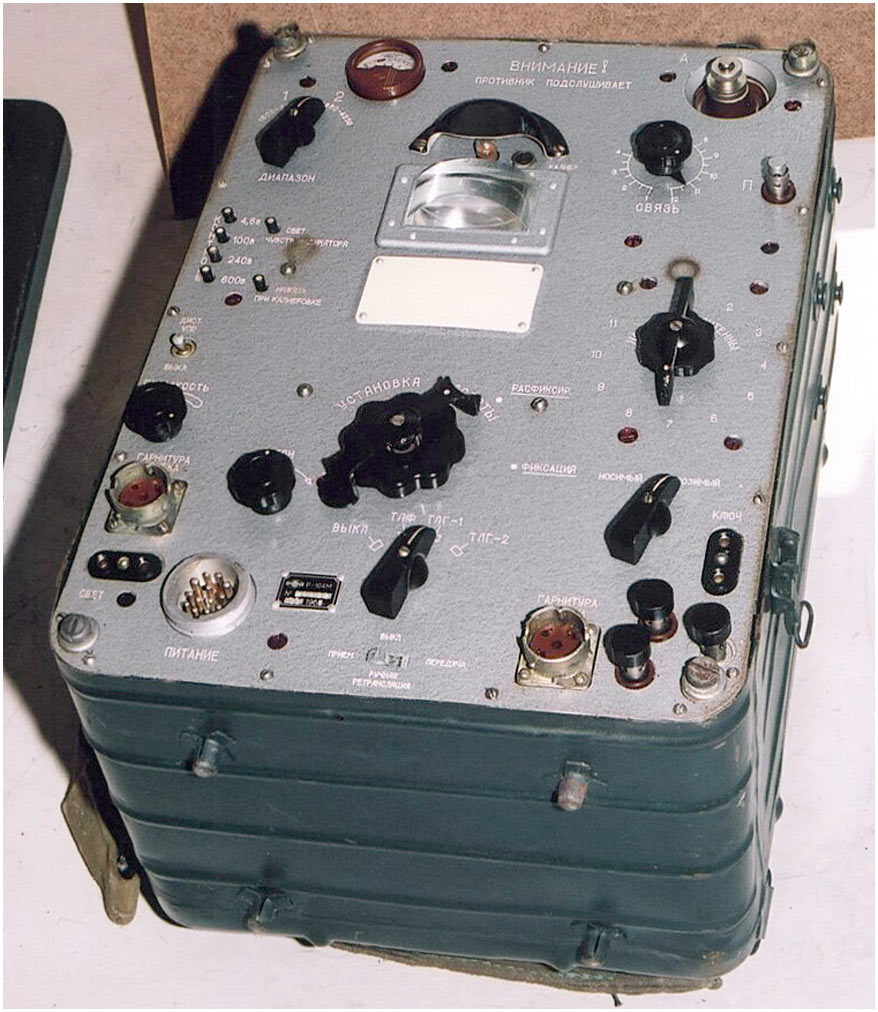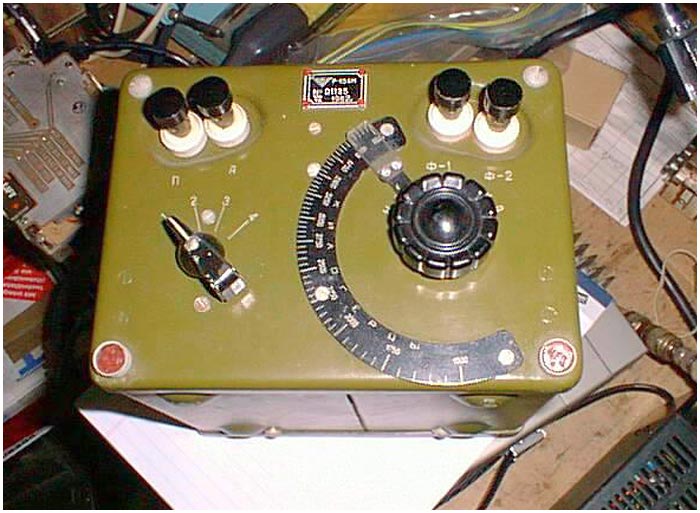Radio station `` R-104 ''.
Receiving and transmitting radio equipment.Army portable shortwave simplex radio stations "R-104" (RDS) and "R-104M" (Kedr). Issued from 1949 and 1955, respectively. The R-104 radio station is intended for short-wave simplex communication in the frequency range from 1.5 to 3.75 MHz in two sub-bands. It is assembled according to the transceiver circuit. The receiving path includes one UHF stage, a mixer for telephone mode, a mixer for telegraph mode with a crystal filter, a two-stage IF amplifier with filters, and a low-frequency amplifier used in transmission as a baseband amplifier. The heterodyne is a tunable LC generator operating in the frequency range 2.19-3.57 MHz. When operating on the first subband, the received signal is subtracted from the local oscillator signal to obtain an IF which is 690 KHz) and when operating on the second subband, the local oscillator signal is subtracted from the received signal. When transmitting with a tunable local oscillator signal, the signal of a crystal oscillator with a frequency of 690 kHz is mixed. Amplitude modulation is carried out in the output stage of the transmitter, which uses a GU50 lamp (in a portable version of the radio station) or a 4P1L lamp (in a portable version). An antenna matching device is included in the radio set for matching with different types of antennas. The power supply of the radio station is made as a separate unit. Tuning to the frequency is carried out on a visual circular mechanical scale. The supply voltage of the radio station in the wearable version is 4.8 volt batteries. The weight of the radio station is 21.5 kg, the weight of the entire set is 39.5 kg. The output power at the equivalent antenna in the transportable version is 20/10 W AM / CW, in the portable version it is 3.5 / 1 W, respectively. The R-104M radio station is distinguished by an extended range of 1.5 ... 4.75 MHz and small changes in electrical. schemes.